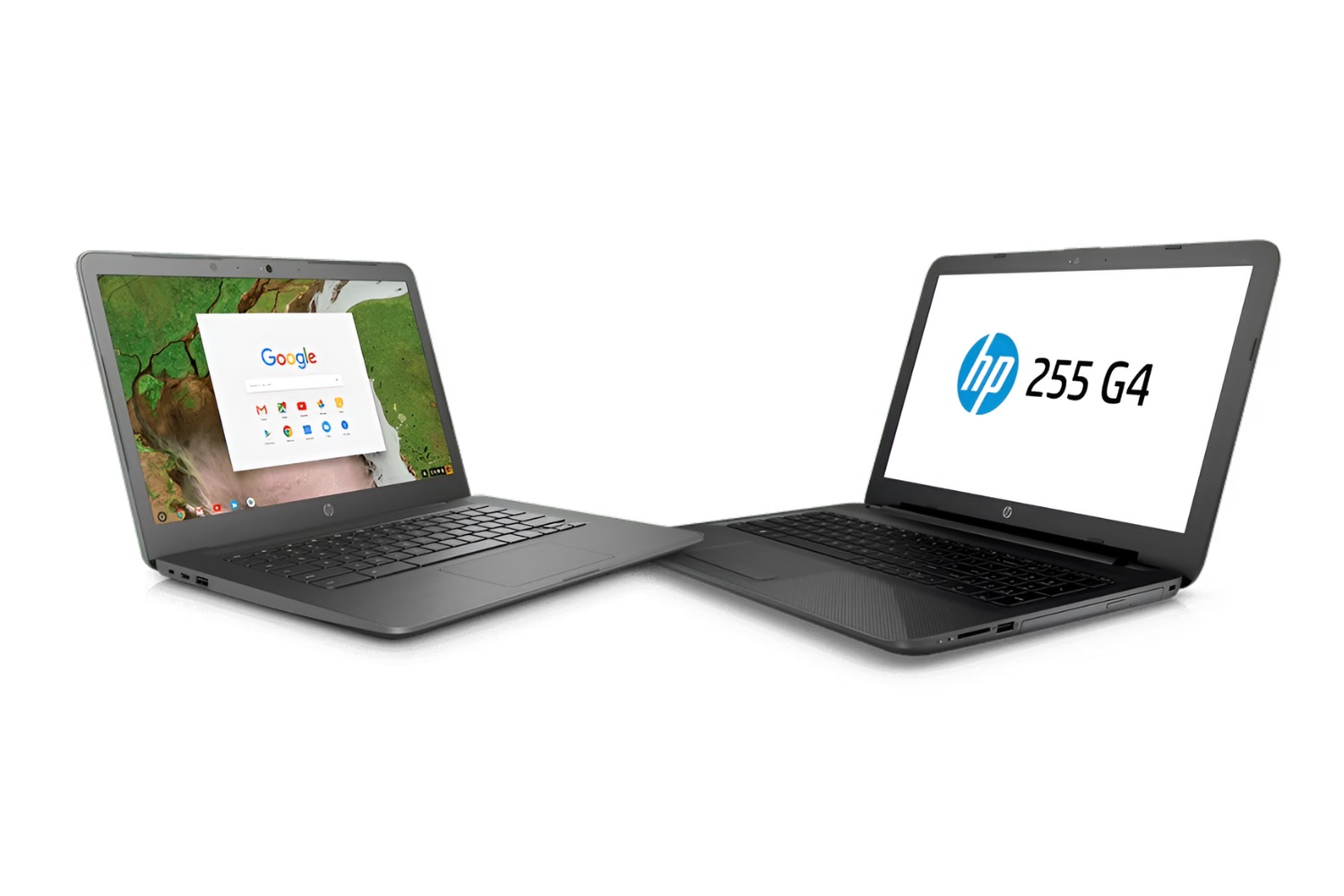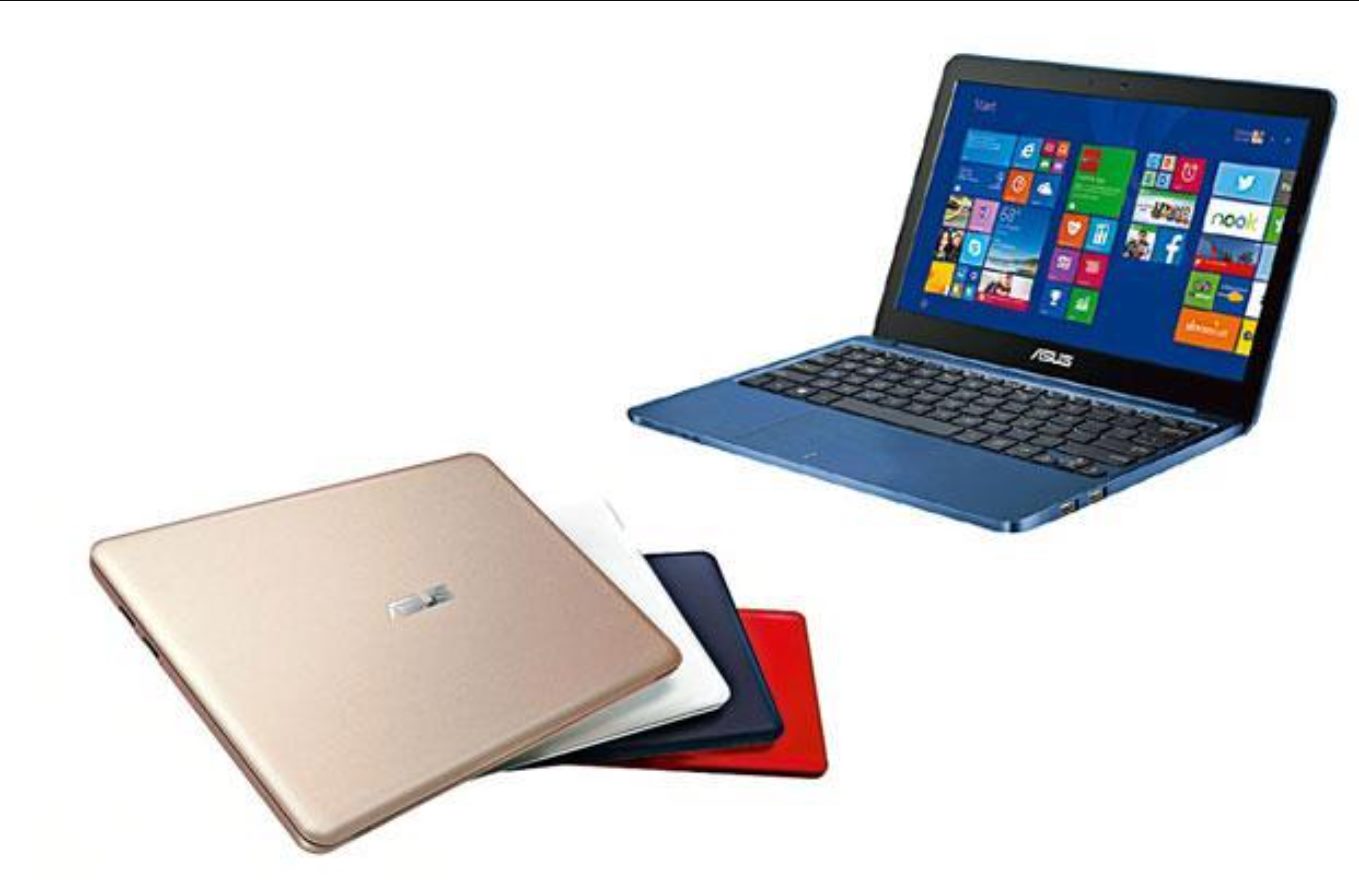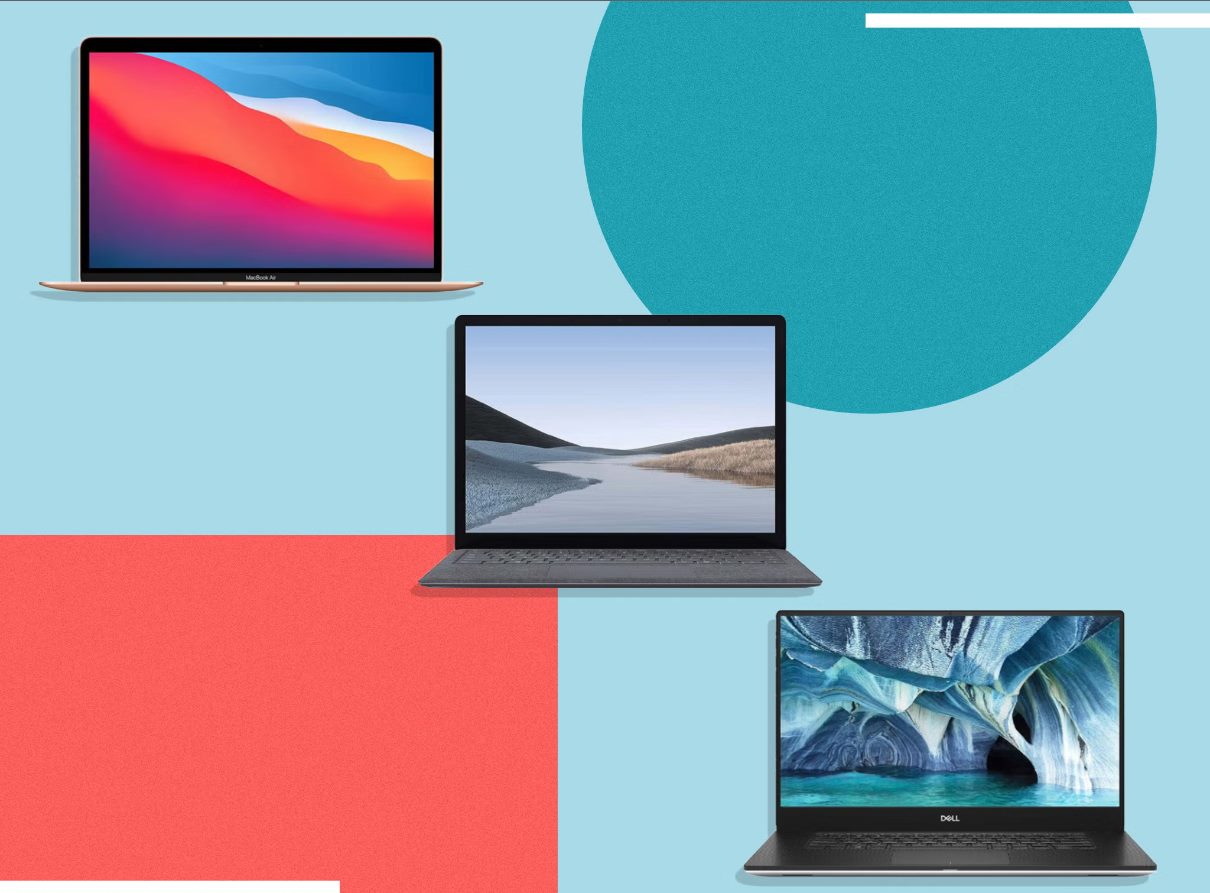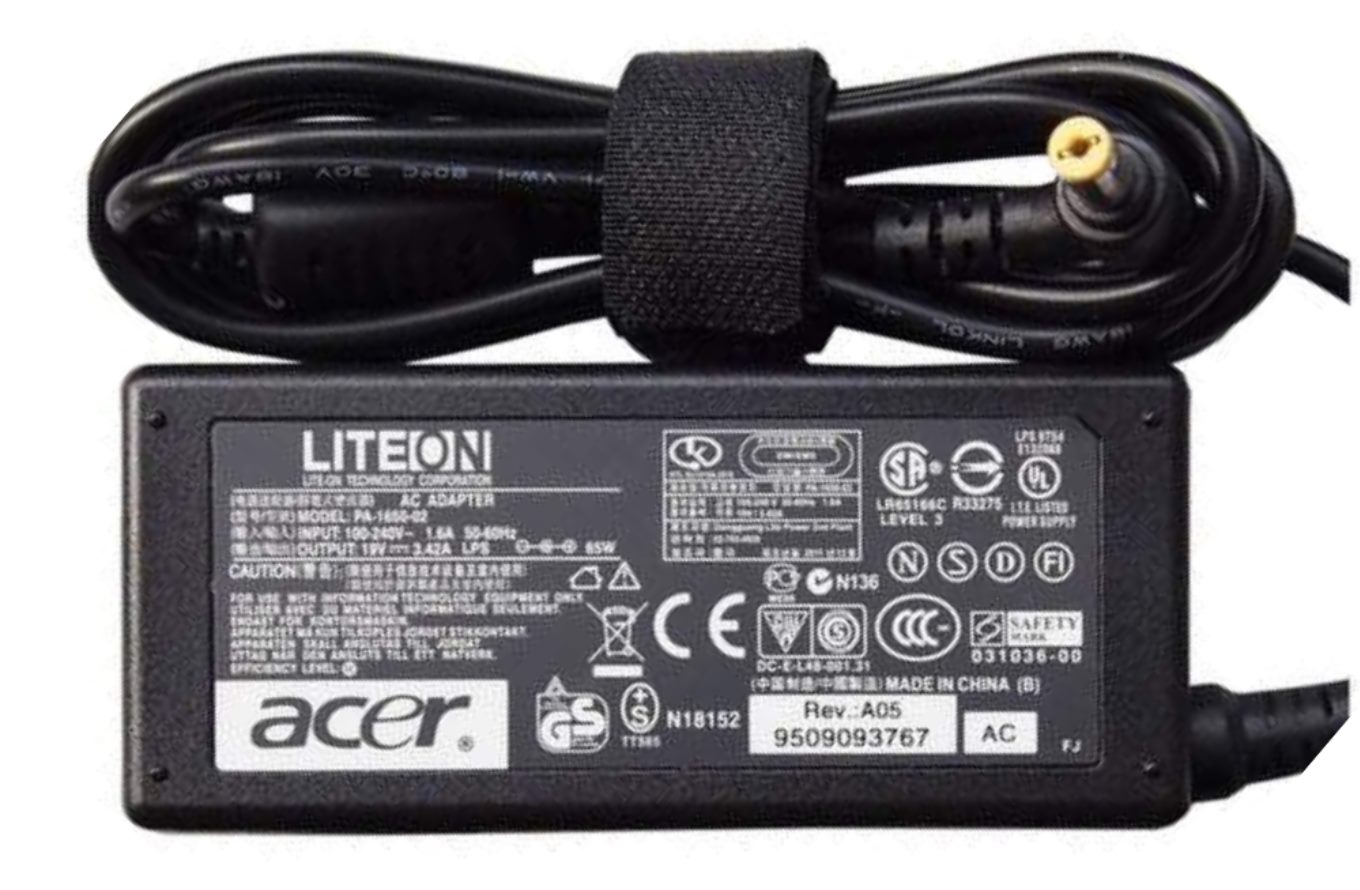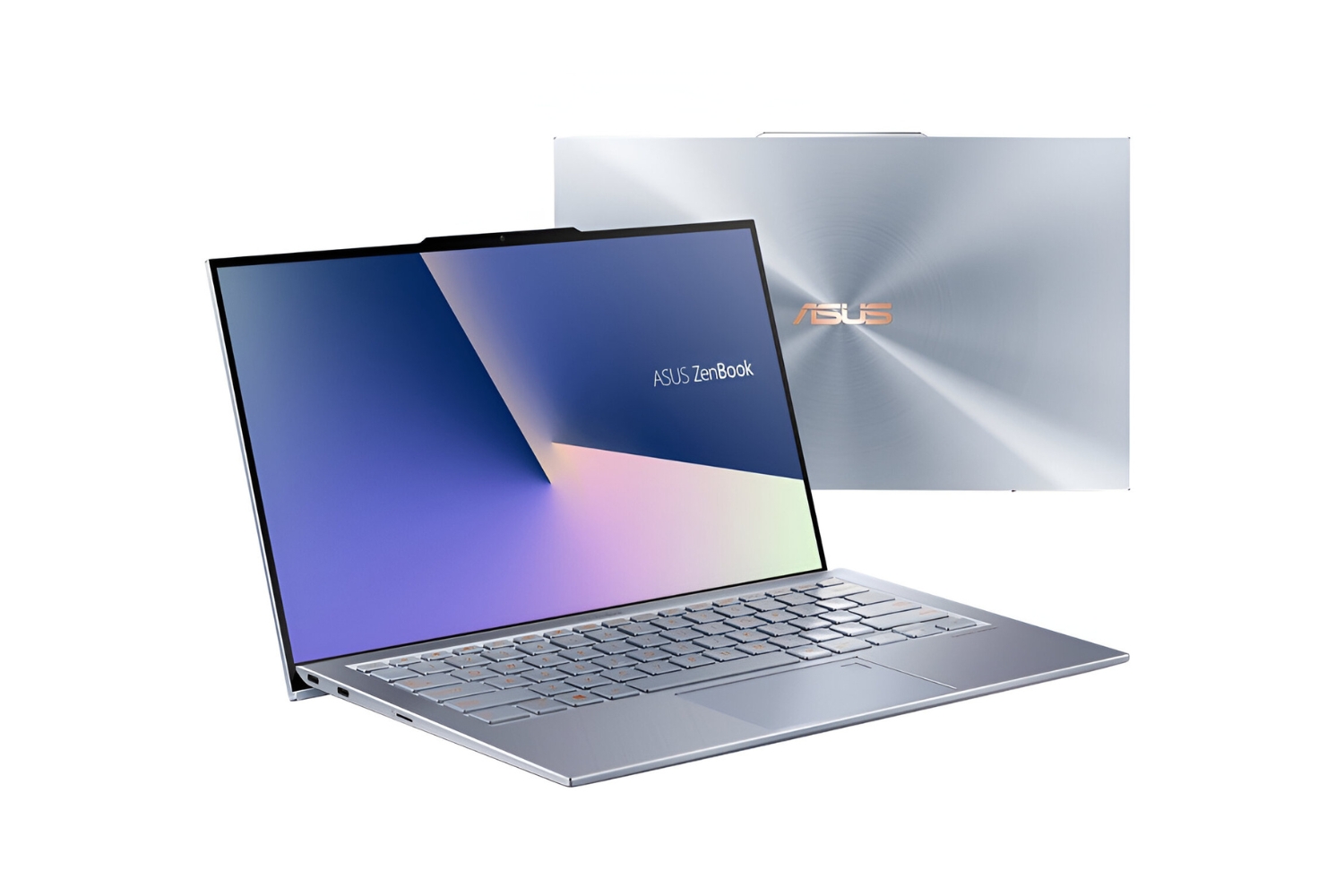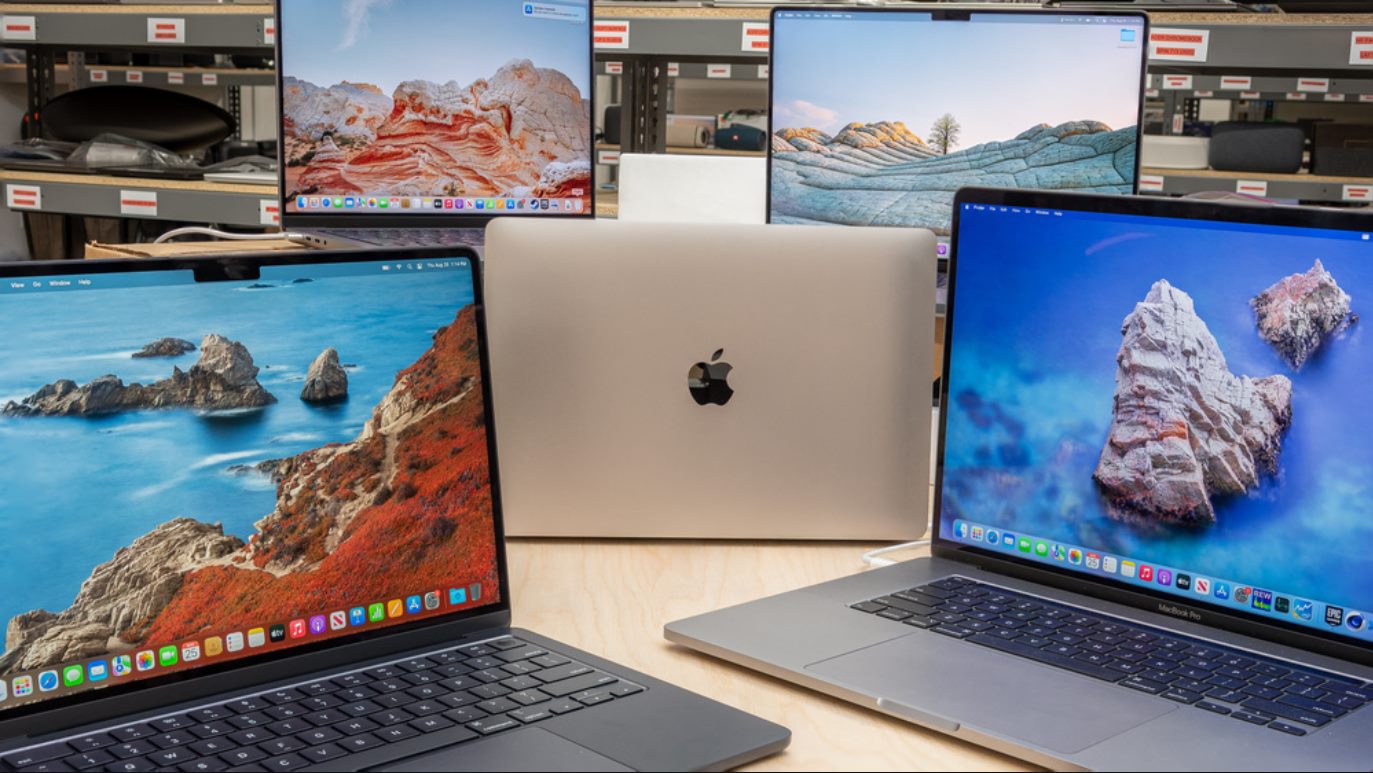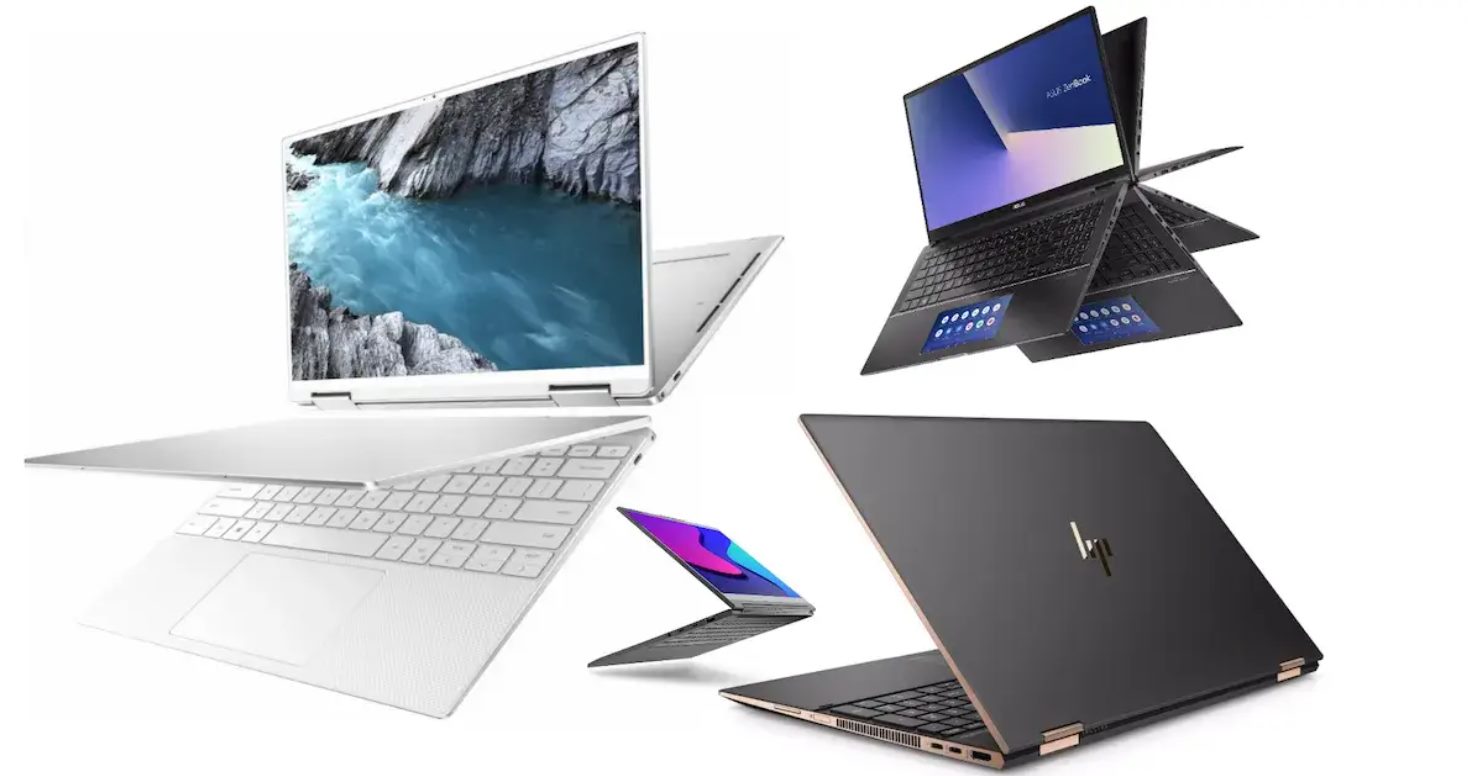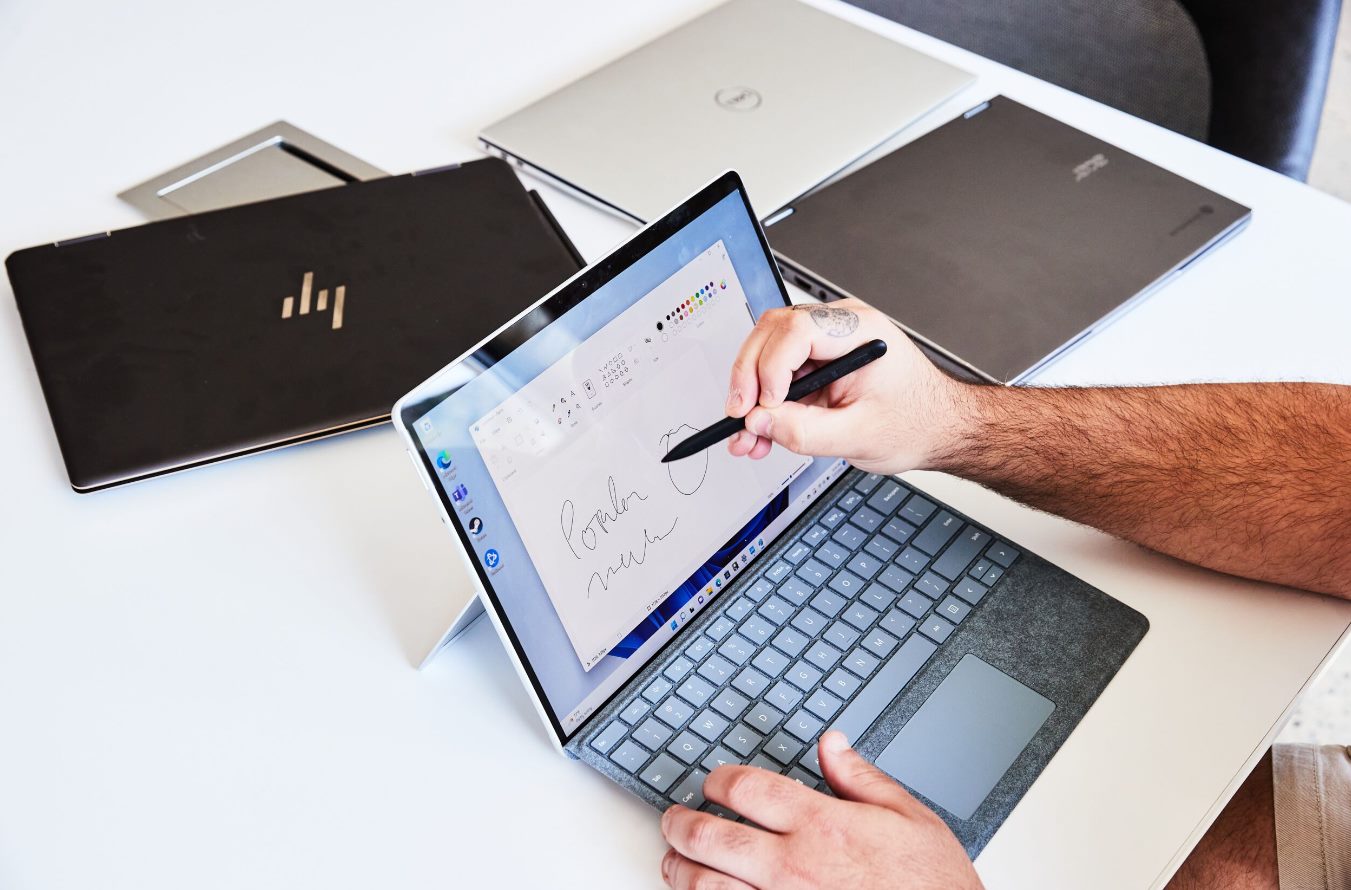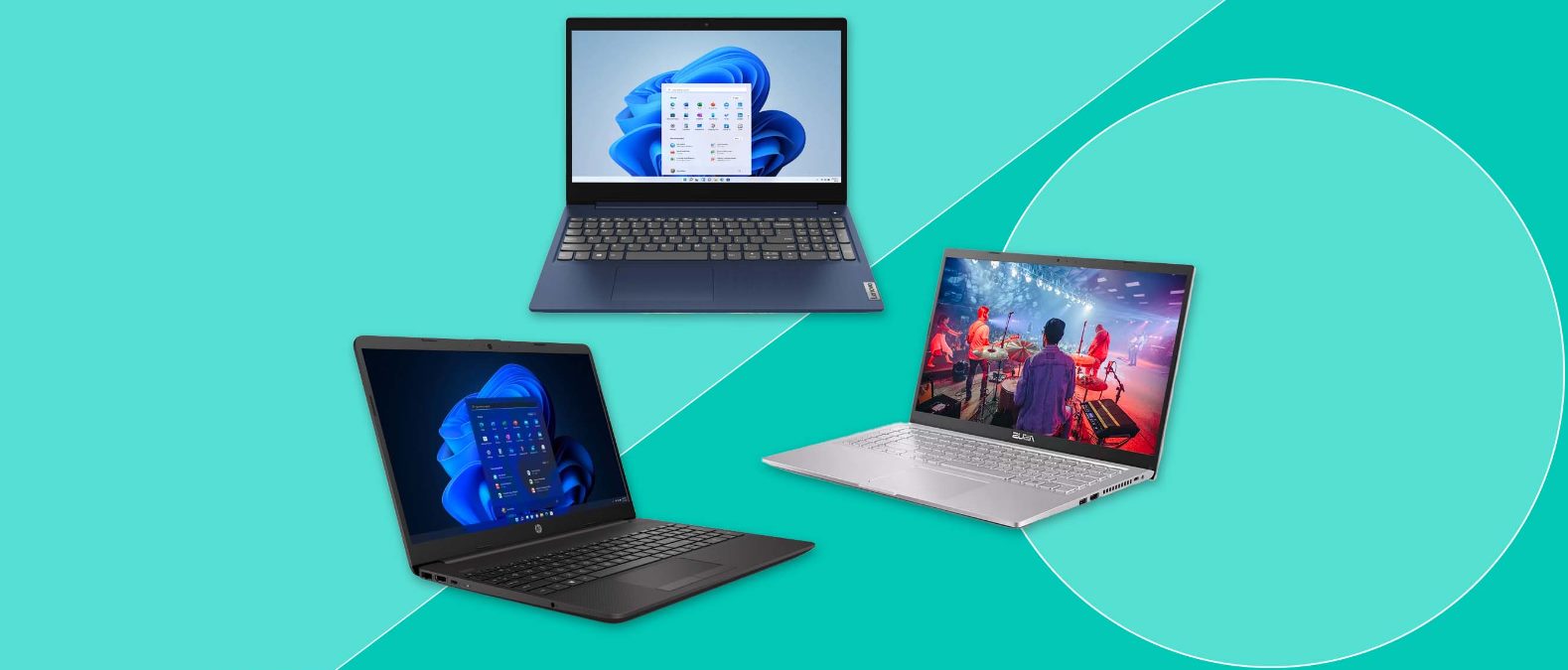Introduction
Welcome to the world of portable computing! In this article, we will explore the key differences between Chromebooks and Ultrabooks, two popular choices in the laptop market. While both offer their own unique features and advantages, understanding their distinctions will help you make an informed decision when it comes to selecting the right device for your needs.
Chromebooks and Ultrabooks are both lightweight and compact laptops designed for on-the-go use. They provide convenient access to the internet and a range of productivity tools, making them popular choices for students, professionals, and anyone looking for a versatile computing device. However, there are some fundamental differences between the two that set them apart.
Chromebooks are laptops that run on Chrome OS, a lightweight operating system developed by Google. They prioritize online connectivity and heavily rely on cloud-based applications. On the other hand, Ultrabooks are a type of laptop that meets specific hardware requirements set by Intel. They typically run on Windows or macOS and offer a wider range of software compatibility. Understanding these core distinctions will help you determine which device aligns with your needs and preferences.
In the following sections, we will delve deeper into various aspects such as design, performance, storage, battery life, price, software compatibility, connectivity options, and portability. By the end of this article, you will have a comprehensive understanding of the differences between Chromebooks and Ultrabooks, enabling you to make a well-informed decision that suits your specific requirements.
Design and Build
When it comes to design and build, both Chromebooks and Ultrabooks strive to offer sleek and portable devices. However, there are some notable differences in their construction and aesthetics.
Chromebooks often feature a minimalist design with a thin and lightweight profile. They are typically made of affordable materials like plastic or aluminum, which helps keep the overall cost lower. Chromebooks also commonly have smaller screen sizes, ranging from 11 to 14 inches, making them highly portable and suitable for use on the go. Additionally, some Chromebooks have convertible designs with 360-degree hinges that allow them to be used as tablets or in tent mode.
In contrast, Ultrabooks focus on a premium build quality, with a more refined and sophisticated appearance. They are crafted using higher-grade materials such as aluminum or magnesium alloy, giving them a more durable and premium feel. Ultrabooks often have larger screen sizes, typically ranging from 13 to 15 inches, offering a more immersive viewing experience. The design of Ultrabooks also tends to be more traditional, with a clamshell form factor.
Furthermore, Ultrabooks prioritize slimness and thinness, aiming to provide an ultraportable experience. They strive to strike a balance between being lightweight and delivering high performance. Some Ultrabooks even feature razor-thin bezels and ultra-slim profiles, maximizing screen real estate while maintaining portability.
Ultimately, the choice between a Chromebook and an Ultrabook in terms of design and build will depend on your preference for material, screen size, and overall aesthetics. If you prioritize affordability and a compact form factor, a Chromebook may be the ideal choice. However, if you value premium materials, larger screens, and thinner profiles, an Ultrabook would be more suitable.
Operating System
One of the key distinctions between Chromebooks and Ultrabooks lies in their operating systems. As mentioned earlier, Chromebooks run on Chrome OS, while Ultrabooks typically run on Windows or macOS.
Chrome OS, developed by Google, is a lightweight, web-centric operating system designed around the Chrome browser. It focuses on providing a seamless and simplified experience for users who primarily rely on web applications and cloud storage. Chrome OS offers fast boot times and quick access to online services, making it an excellent choice for users who spend most of their time in a browser environment.
On the other hand, Ultrabooks powered by Windows or macOS offer a more traditional computing experience with broader software compatibility. Windows supports a wide range of applications, including productivity tools, creative software, and gaming. macOS, exclusive to Apple devices, offers a seamless integration with other Apple products and a user-friendly interface.
Both Windows and macOS provide a robust ecosystem of software, allowing users to run a variety of applications offline. This makes Ultrabooks more versatile in terms of software compatibility compared to Chromebooks, which primarily rely on web apps. However, with the rise of web-based software and cloud storage, Chrome OS has become increasingly capable of handling various tasks, including document editing, multimedia playback, and even offline usage.
It’s important to consider your computing needs and preferred software when deciding between a Chromebook and an Ultrabook. If you heavily rely on specific desktop applications or require specialized software, an Ultrabook with Windows or macOS may be a better fit. However, if you primarily rely on web-based applications and prefer a streamlined and simplified user experience, a Chromebook running Chrome OS can fulfill your needs.
Performance
When it comes to performance, both Chromebooks and Ultrabooks offer varying levels of power and capabilities.
Chromebooks are designed to deliver efficient performance for everyday tasks such as web browsing, email, document editing, and media streaming. They typically feature lower-powered processors, such as Intel Celeron or Pentium, along with a modest amount of RAM. This level of hardware, combined with the lightweight Chrome OS, results in fast boot times and smooth performance for web-based activities.
Ultrabooks, on the other hand, are engineered to provide more robust performance for a wide range of tasks. They come equipped with more powerful processors, such as Intel Core i5 or i7, along with higher amounts of RAM and storage. This configuration allows Ultrabooks to handle resource-intensive tasks such as photo and video editing, gaming, and multitasking with ease. Additionally, Ultrabooks often feature solid-state drives (SSDs), which provide faster data access and shorter loading times compared to the eMMC storage commonly found in Chromebooks.
While Chromebooks may have limitations in terms of hardware power, they compensate for it by relying on cloud-based applications and storage. By offloading processing tasks to the cloud, Chromebooks can deliver smooth performance even with lower-spec hardware. However, it is worth noting that heavy multitasking or running demanding applications may cause Chromebooks to lag or struggle to match the performance of Ultrabooks.
If you require a device that can handle resource-intensive tasks or prefer a more powerful computing experience, an Ultrabook would be a better choice. However, if your needs primarily involve lightweight computing tasks and you can rely on web-based applications, a Chromebook can provide a smooth and responsive performance.
Storage
When it comes to storage, both Chromebooks and Ultrabooks offer different options to suit varying user needs.
Chromebooks generally come with relatively lower storage capacities compared to Ultrabooks. Most Chromebooks offer either 32GB or 64GB of internal storage, which may seem limited at first glance. However, Chrome OS is designed to heavily rely on cloud storage, allowing users to store their files, documents, and media on services like Google Drive. This cloud-centric approach means that Chromebook users can access their files from any device with an internet connection, without worrying about storage space limitations.
Ultrabooks, on the other hand, often provide larger internal storage capacities, typically ranging from 128GB to 1TB or more. This ample storage allows users to store a significant amount of files, applications, and media directly on their device. Ultrabooks often utilize solid-state drives (SSDs), which offer fast read and write speeds, resulting in quicker data access and application loading times compared to the eMMC storage commonly found in Chromebooks.
Furthermore, Ultrabooks often provide options for external storage expansion, such as USB ports or SD card slots. This versatility allows users to connect external hard drives, flash drives, or SD cards to increase their storage capacity or quickly transfer files between devices.
When deciding between a Chromebook and an Ultrabook, it’s crucial to consider your storage needs. If you heavily rely on cloud storage and have a consistent internet connection, a Chromebook’s smaller internal storage may be sufficient. However, if you prefer having ample local storage for offline access or need to store large files directly on your device, an Ultrabook’s larger internal storage capacity and expandability options would better suit your needs.
Battery Life
Battery life is an important consideration when choosing a laptop, especially for users who are constantly on the move or need their devices to last through long work or study sessions.
Chromebooks are well-known for their impressive battery life. The combination of the lightweight Chrome OS and efficient hardware allows Chromebooks to offer extended battery longevity. On average, Chromebooks can provide anywhere from 8 to 12 hours of usage on a single charge. This long battery life makes them an excellent choice for users who prioritize portability and need their device to last throughout the day without frequent charging.
Ultrabooks also offer respectable battery life, but it may vary depending on the specific model and usage patterns. Generally, Ultrabooks can provide around 6 to 10 hours of battery life, although certain high-performance models or devices with larger screens may have shorter endurance. Ultrabooks often employ power-efficient processors and optimization techniques to extend battery life, and some models also come with fast charging capabilities, allowing users to quickly recharge their devices when needed.
It’s important to note that battery life can vary based on various factors such as screen brightness, the number of applications running, and the intensity of tasks being performed. Additionally, over time, battery life may decrease due to natural degradation, although modern lithium-ion batteries are designed to maintain their capacity for a significant period of time.
When deciding between a Chromebook and an Ultrabook, consider your usage patterns and requirements for battery life. If you need a laptop that can last throughout the day without frequent charging, a Chromebook’s extended battery longevity may be ideal. However, if you value a balance between portability and performance and can manage with slightly shorter battery life, an Ultrabook would still provide sufficient battery endurance for most users.
Price
Price is often a significant factor when deciding between Chromebooks and Ultrabooks, as it can greatly influence the affordability and overall value of a laptop.
Chromebooks are generally more budget-friendly compared to Ultrabooks. With their focus on simplicity and web-based functionality, Chromebooks often come with a lower price tag. Entry-level Chromebooks can be found for as low as $200, making them an excellent option for users on a tight budget or those who require a basic computing device.
Ultrabooks, on the other hand, tend to be more expensive due to their premium build quality, hardware specifications, and wider range of features and capabilities. Prices for Ultrabooks typically start around $700 and can go well above $1,000, depending on the brand, model, and configuration. These higher prices generally reflect the more powerful processors, larger storage capacities, higher-resolution displays, and overall premium user experience that Ultrabooks offer.
When considering the price, it’s important to assess your specific needs and budget. If you require a laptop primarily for web-based tasks, have a limited budget, or simply need a secondary device, a budget-friendly Chromebook may be the perfect choice. However, if you require higher performance, broader software compatibility, and can invest in a more premium device, an Ultrabook may offer better value in the long run.
Ultimately, the price range for both Chromebooks and Ultrabooks can vary significantly, offering options for users with different budgets and requirements. It’s worth noting that while Chromebooks generally have a lower upfront cost, they may require ongoing subscription fees for certain services or applications, whereas Ultrabooks often provide a more comprehensive computing experience without additional charges.
Applications and Software Compatibility
When it comes to applications and software compatibility, there are notable differences between Chromebooks and Ultrabooks.
Chromebooks primarily rely on web applications and have limited support for traditional desktop software. Chrome OS provides access to a wide range of web-based applications through the Chrome Web Store. These apps are designed to run within the Chrome browser and offer functionality for productivity, communication, entertainment, and more. Additionally, Chromebooks have access to web versions of popular applications like Google Docs, Sheets, and Slides, allowing users to create and edit documents seamlessly.
While the availability of web apps has improved significantly over the years, some specialized software or applications that require specific operating systems or offline capabilities may not be fully compatible with Chromebooks. However, with the growing popularity of cloud-based applications and services, many users find that Chromebooks satisfy their computing needs without relying on traditional software.
Ultrabooks, running on Windows or macOS, offer broader software compatibility. They can run a wide range of desktop applications, including productivity suites like Microsoft Office, graphic design software, video editing tools, coding environments, and more. The versatility of Ultrabooks allows users to install and use specialized software based on their requirements, making them more suitable for users who rely on specific programs for work, school, or personal use.
It’s worth noting that with the rise of cloud computing and web-based applications, the gap in software compatibility between Chromebooks and Ultrabooks has considerably narrowed. Many popular applications now offer web-based versions or have web alternatives that Chromebook users can utilize. Additionally, Chromebooks have the advantage of seamless integration with Google Workspace and cloud storage services like Google Drive. These factors make Chromebooks a viable option for users who prioritize web-based applications and services.
When considering software compatibility, it’s essential to assess your specific needs and determine if the applications you require are compatible with the operating system of your preferred device. If you rely heavily on specialized desktop software, an Ultrabook with Windows or macOS would be the ideal choice. However, if you primarily use web-based applications or can find suitable alternatives in the Chrome Web Store, a Chromebook can fulfill your computing needs effectively.
Connectivity Options
Connectivity options play a vital role in determining the versatility and connectivity capabilities of a laptop. Both Chromebooks and Ultrabooks offer a range of options to ensure seamless integration with other devices and networks.
Chromebooks are designed to prioritize online connectivity. They come equipped with built-in Wi-Fi, allowing users to connect to wireless networks and access the internet. This wireless connectivity is essential for users who rely on web-based applications and cloud storage. Most Chromebooks also have Bluetooth capabilities, enabling users to connect wireless peripherals such as mice, keyboards, or headphones.
Many Chromebook models also offer USB ports, which allow users to connect external devices such as hard drives, flash drives, printers, or other peripherals. Some high-end Chromebooks also feature USB-C ports, providing faster data transfer speeds and power delivery.
Ultrabooks, being more versatile in terms of software compatibility, generally offer a wider array of connectivity options. They often come equipped with built-in Wi-Fi, Bluetooth, and multiple USB ports, allowing for seamless integration with various devices and networks. Ultrabooks commonly offer USB-A ports, enabling the connection of a wide range of peripherals and accessories.
In addition to USB ports, Ultrabooks often feature HDMI or DisplayPort outputs, making it easy to connect to external monitors or projectors for presentations or multimedia experiences. Many Ultrabooks also provide an Ethernet port for users who require a stable and reliable wired internet connection.
Furthermore, Ultrabooks often incorporate Thunderbolt ports, which offer even faster data transfer speeds and the ability to connect to high-resolution external displays or even external GPUs for gaming or rendering purposes. These Thunderbolt ports provide increased versatility and expandability options for power users.
When considering connectivity options, it’s important to evaluate your specific needs and determine the devices you frequently use and their compatibility requirements. If you predominantly rely on web-based applications and wireless connectivity, a Chromebook’s Wi-Fi and Bluetooth capabilities will likely suffice. However, if you require broader connectivity options for connecting external devices or specific peripherals, an Ultrabook’s range of connectivity ports will better cater to your needs.
Portability
Portability is a key factor to consider when choosing a laptop, especially for users who are frequently on the move or need a device that can easily be carried around.
Chromebooks are renowned for their excellent portability. They are typically designed to be thin, lightweight, and highly compact. Most Chromebooks feature screen sizes ranging from 11 to 14 inches, making them smaller and more portable compared to many Ultrabooks. This compact form factor, combined with their lightweight construction, allows Chromebooks to easily slip into backpacks or bags without adding significant weight or bulk.
In addition to their smaller size and weight, Chromebooks also offer long battery life. This portability-friendly feature enables users to work or enjoy entertainment on the go without the constant need to be near a power outlet.
Ultrabooks, while generally more powerful and feature-rich, may be slightly less portable in comparison to Chromebooks due to their larger screen sizes and sometimes heavier build. Ultrabooks typically have screen sizes ranging from 13 to 15 inches, providing more immersive and spacious displays. While this allows for enhanced visual experiences, it also contributes to a slightly larger overall device footprint.
However, it’s worth noting that Ultrabooks strive to find a balance between performance and portability. With advancements in technology, manufacturers have managed to create Ultrabooks with slim profiles and lightweight designs without sacrificing power. Many Ultrabooks now feature ultra-thin bezels, which effectively reduce the size of the overall device without compromising screen real estate.
In terms of build quality, both Chromebooks and Ultrabooks offer options that prioritize durability. However, Ultrabooks, often crafted with premium materials like aluminum or magnesium alloy, generally provide a more robust and solid feel compared to the plastic construction commonly found in entry-level Chromebooks.
Ultimately, when deciding between Chromebooks and Ultrabooks in terms of portability, it’s crucial to consider your specific needs. If you require a highly portable device that is lightweight, compact, and offers long battery life, a Chromebook would be a fitting choice. However, if you value a blend of power, performance, and a larger display, an Ultrabook can still provide a portable option without compromising too much on size and weight.
Conclusion
Choosing between a Chromebook and an Ultrabook ultimately depends on your specific needs, preferences, and budget. Both laptops offer distinct advantages and cater to different types of users.
If you prioritize affordability, a lightweight and highly portable design, and seamless integration with web-based applications and services, a Chromebook is a great choice. Chromebooks excel in providing a simple and streamlined browsing and productivity experience, backed by long battery life and a budget-friendly price tag.
On the other hand, if you require a more versatile and powerful laptop that can handle resource-intensive tasks, provides compatibility with a wide range of software and applications, and offers a premium build quality, an Ultrabook is the preferred option. Ultrabooks strike a balance between performance and portability, offering high-quality displays, faster processors, expandable storage, and a wider array of connectivity options.
Consider your specific computing needs, such as the type of applications and software you rely on, the desired level of performance, storage requirements, battery life expectations, and preferred screen size. Evaluate your budget and determine the trade-offs you are willing to make.
Whether you choose a Chromebook or an Ultrabook, both laptops provide their own unique benefits and can serve as reliable companions for work, study, or entertainment. By understanding the differences between the two, you can make an informed decision and select the laptop that best suits your lifestyle and computing requirements.







